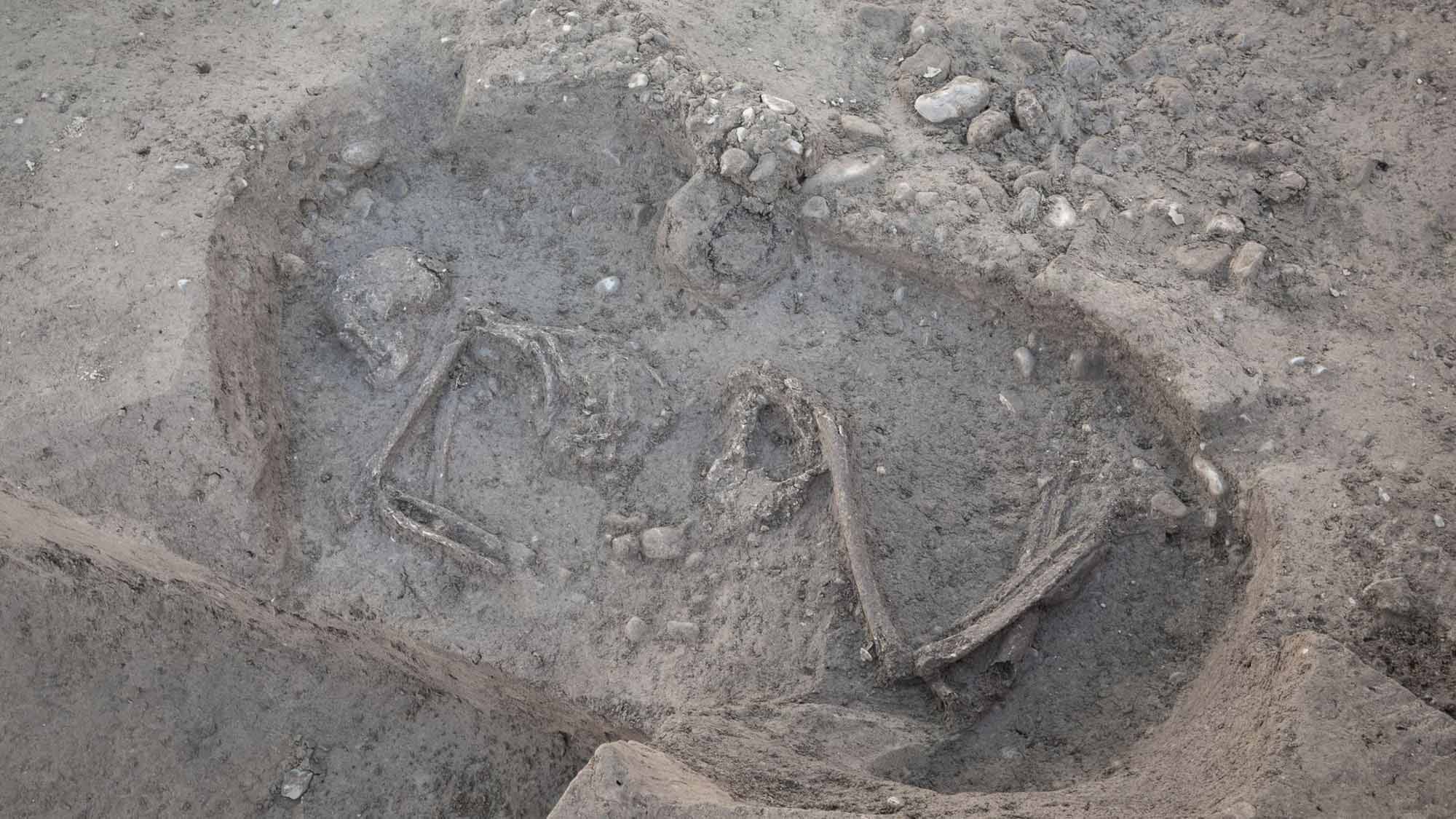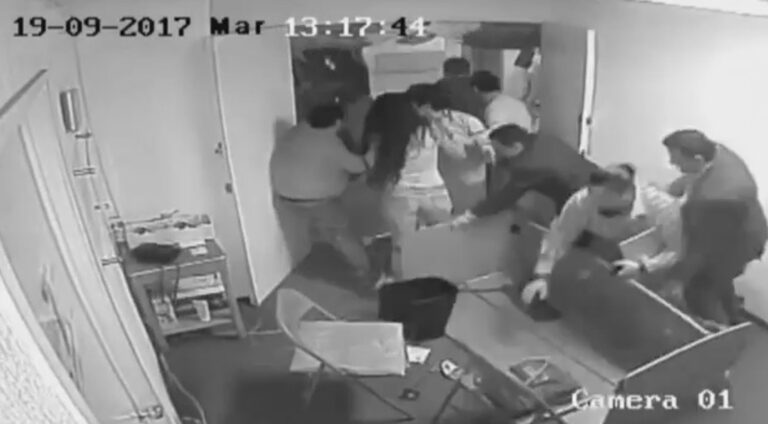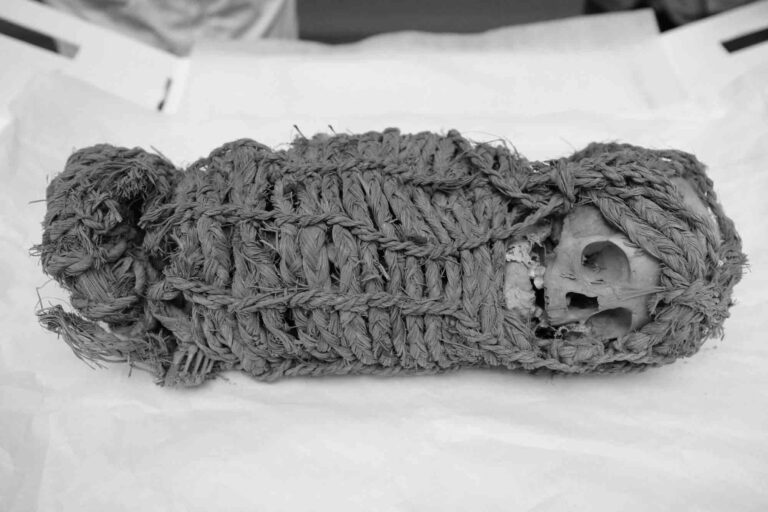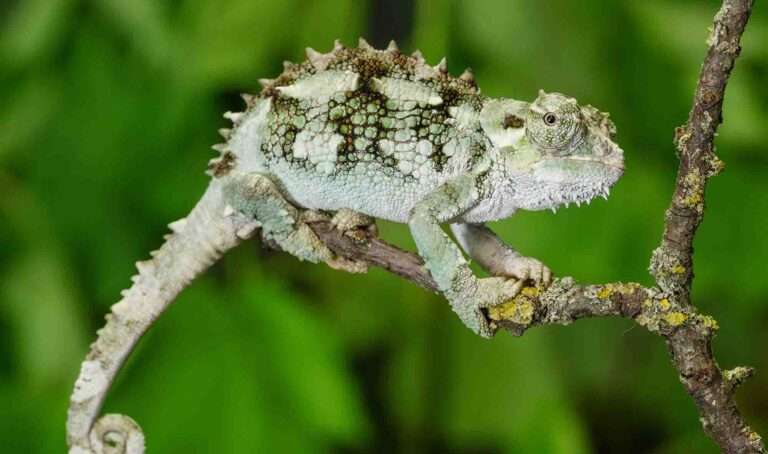Astonished archaeologists have unearthed a Stone Age tomb under a school with the perfectly preserved skeleton of a middle-aged man.
The ancient grave was first found by a mechanical digger operator helping to excavate land for an extension to the school.
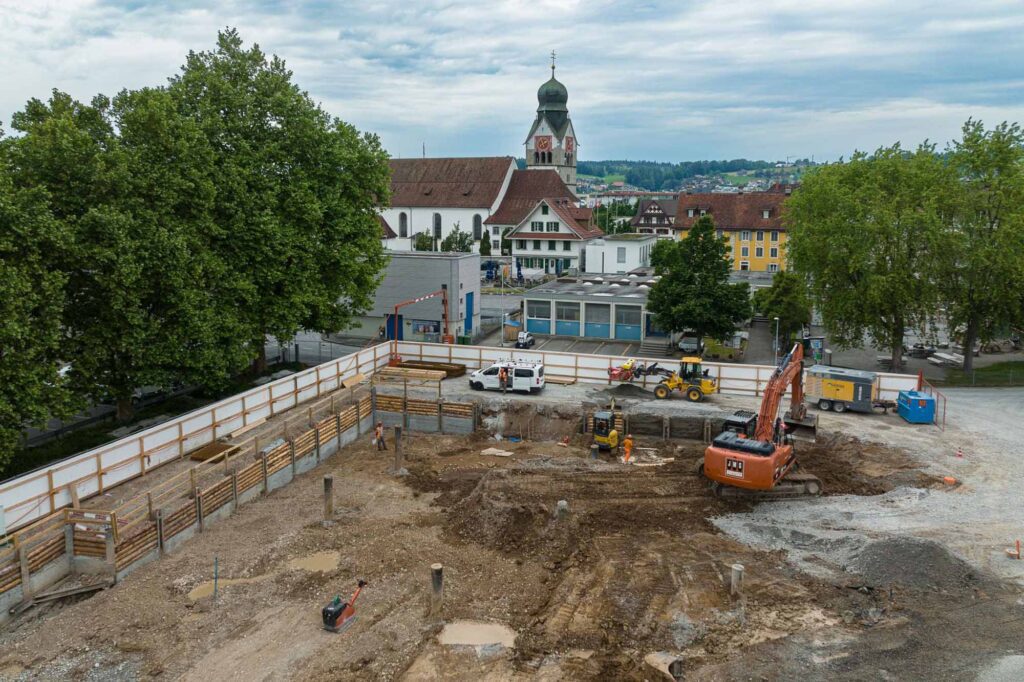
(Jochen Reinhard (ADA)/Newsflash)
Images of the remains show the man – thought to be aged between 30 and 50 – had been buried curled in the foetal position.
He had been laid on his right side with his head facing south, a traditional burial position in the era.
Behind him, a cup-shaped burial pottery vessel had been placed behind his back, cord-marked with techniques typical from 2,800 BC.
Then simple slabs of stone were laid on top of the grave which remained untouched in Baar, Zug canton, Switzerland, until earlier this month (September).
Local expert Gishan Schaeren – head of Prehistoric and Early Historical Archeology – said: “This happens maybe once in a lifetime.
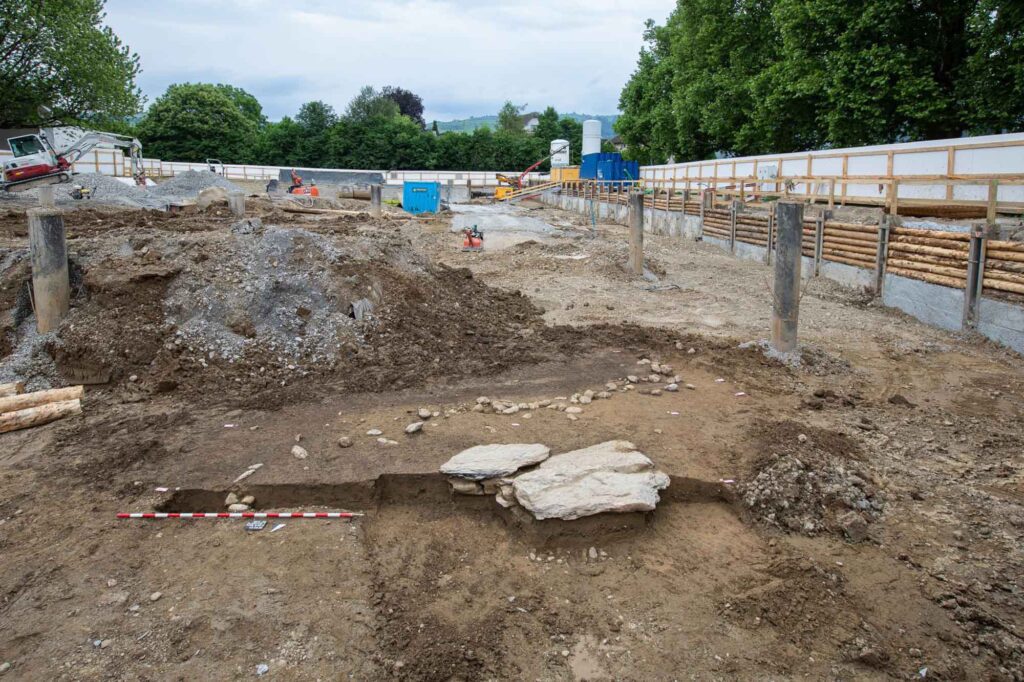
(Jochen Reinhard (ADA)/Newsflash)
“It’s a huge stroke of luck and coincidence that we discovered it.
“It’s like looking for a needle in a haystack. And then there’s the fact that we don’t even know if it even has a needle.”
Excavation project manager Jochen Reinhard – from the Office for Monument Preservation and Archaeology – revealed that the tomb could have been part of a graveyard washed away by the local Lorze river.
He said in a statement obtained by Newsflash: “It cannot be ruled out that further graves were already washed away by the Lorze in prehistoric times and thus destroyed.”
Neolithic graves are rare in Switzerland and Zug canton officials stated: “It is the first regular burial of this time that could be recovered and documented in the canton.
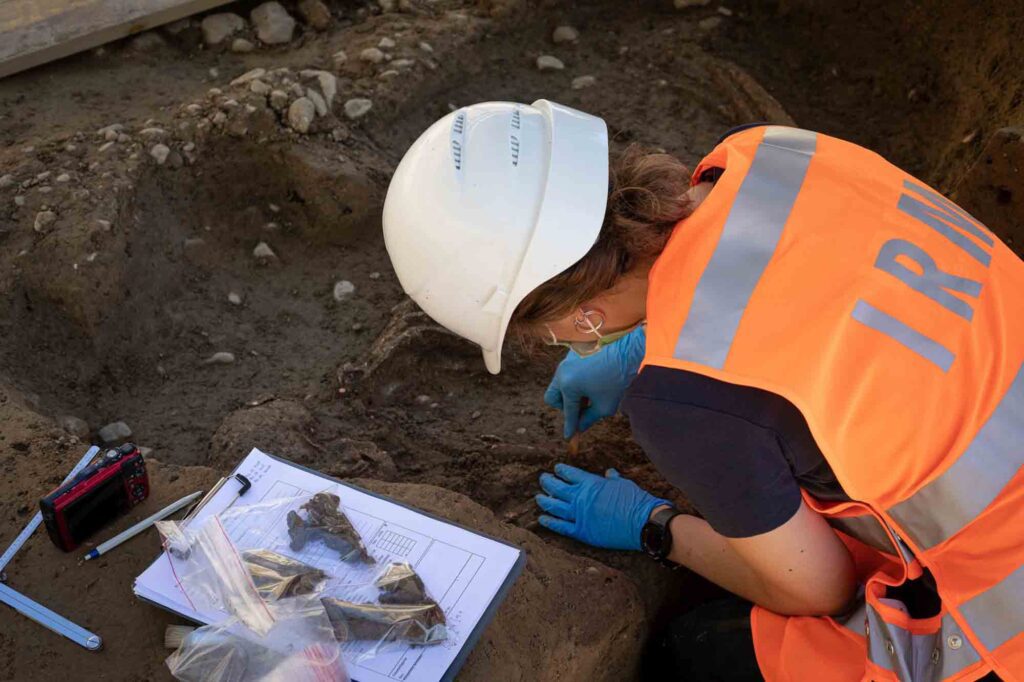
(Jochen Reinhard (ADA)/Newsflash)
“The dead man from Baar is the most southerly discovery spot in all of German-speaking Switzerland and is therefore the ‘closest to the Alps'”.
Head of the Office for the Preservation of Monuments and Archaeology Karin Artho said: “I am delighted that the cantonal archaeology department has succeeded in making such an exciting find, and I am looking forward to the evaluation of the data.”
Further analysis of the skeleton’s bones and teeth should provide more information about his origin, health condition and diet.
To find out more about the author, editor or agency that supplied this story – please click below.
Story By: Georgina Jadikovska, Sub-Editor: Marija Stojkoska, Agency: Newsflash
The Ananova page is created by and dedicated to professional, independent freelance journalists. It is a place for us to showcase our work. When our news is sold to our media partners, we will include the link here.

